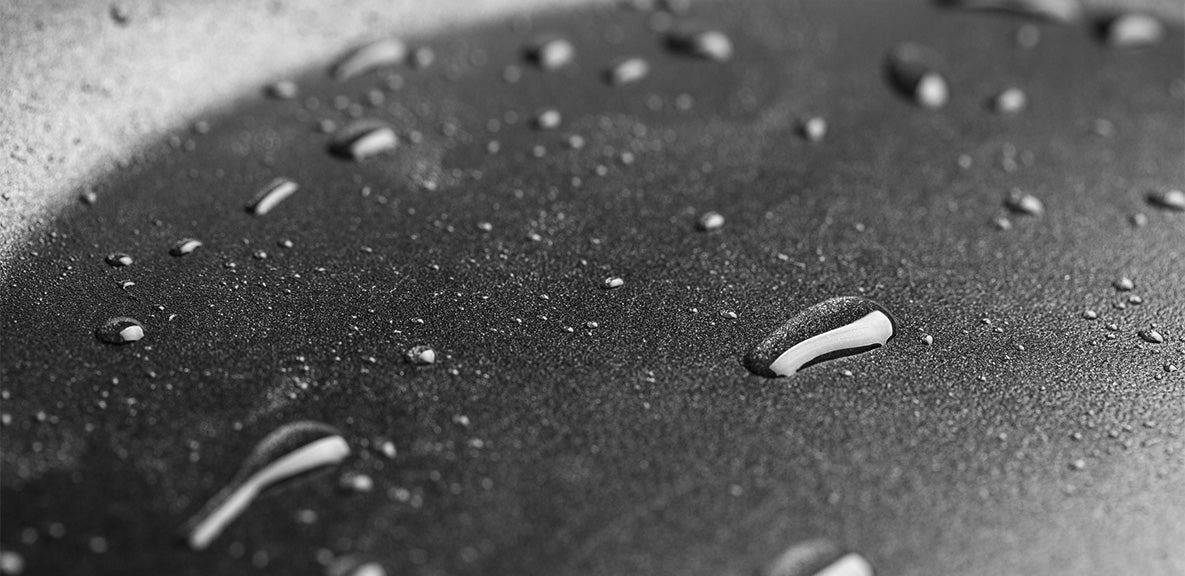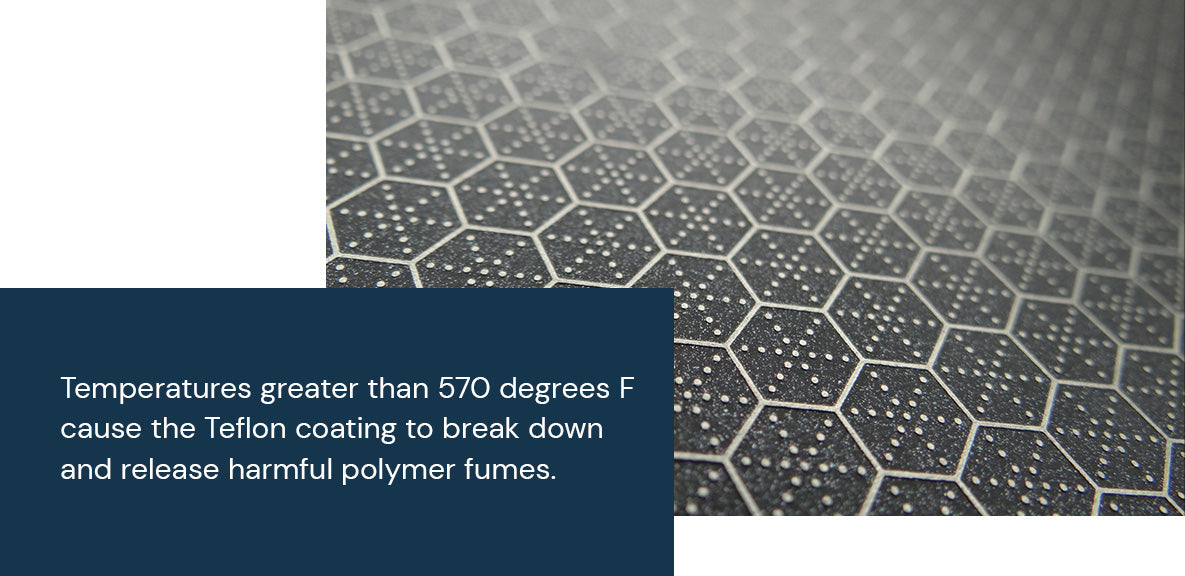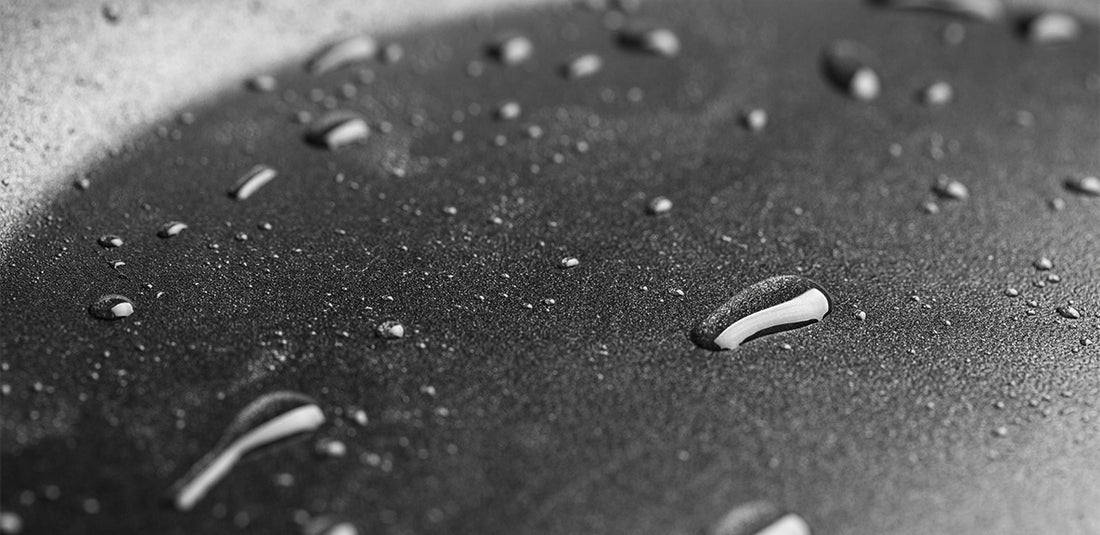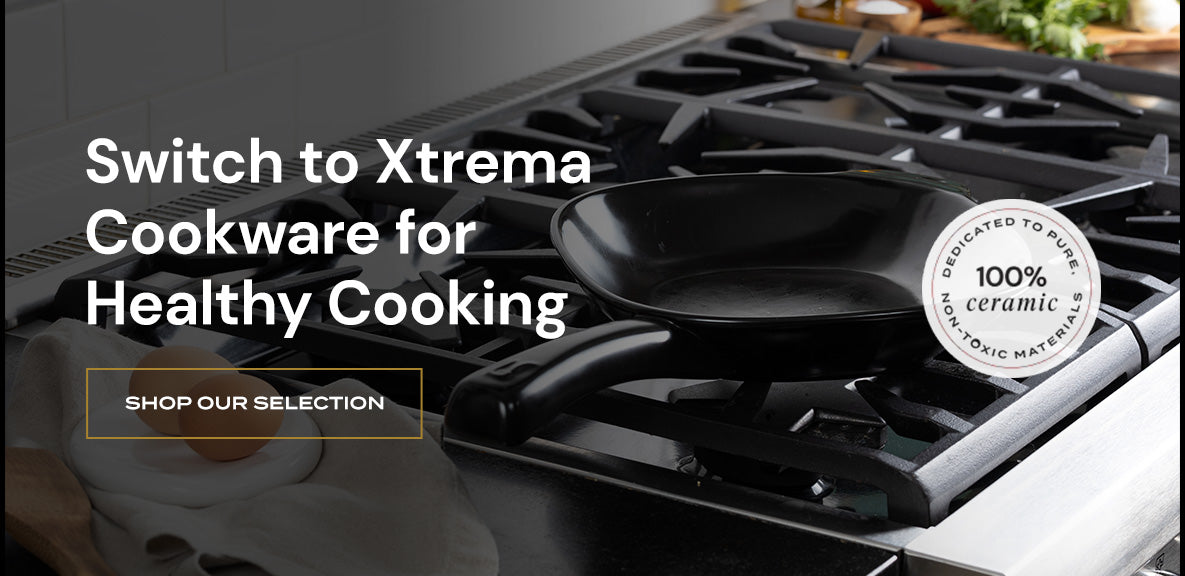
Households around the world choose Teflon cookware for everyday cooking. This cookware offers convenience when it comes to flipping pancakes, frying an egg and cooking other foods that usually cling to pots and pans. However, even though this frictionless surface makes cooking a little easier, there is some controversy surrounding Teflon products. The chemicals used to create the smooth surface that people love actually have serious health implications.
In this article, we'll look at Teflon hazards, possible side effects of Teflon and why you should consider switching to a healthier alternative.
What Is Teflon?
Teflon came into commercial use in the 1940s. It is the brand name for a synthetic chemical called polytetrafluoroethylene (PTFE). Consisting of carbon and fluorine atoms, PTFE is used in various applications to coat surfaces and create a barrier between the surface and any outside elements. Once coated, the surface is baked, resulting in a frictionless product that is nonreactive, nonstick, noncorrosive and waterproof.
Many people know Teflon as the coating that makes their cookware nonstick. However, Teflon's applications span many industries, having been used in craft supplies, cable coatings, fabric protectors and waterproof clothing. Even NASA uses Teflon!
So why is Teflon popular for cookware? Essentially, the smooth surface makes Teflon-coated cookware easy to use and clean. Plus, you don't need to use a lot of oil or butter to cook your food with nonstick tools, which is appealing to people looking to lower their fat intake.
The Impacts of PFOA
Until 2013, Teflon was manufactured using a chemical called perfluorooctanoic acid (PFOA). PFOA gave Teflon its miracle nonstick ability, but it is also linked to health concerns like thyroid disorders and chronic kidney disease.
One case that demonstrates the dangers of PFOA involves DuPont, a large chemical company that produces Teflon. DuPont has faced multiple lawsuits due to PFOA from one of their West Virginia manufacturing plants polluting the water supply. People in West Virginia and Ohio claimed to have suffered illness as a result of the contamination. These lawsuits date back to 1998, and as recently as 2017, DuPont settled more than 3,550 lawsuits for over $670 million.
DuPont also settled a major class action lawsuit in 2005, and in 2006, the Environmental Protection Agency (EPA) created the PFOA Stewardship Council. Each participating company, including DuPont, successfully met program goals, and as a result, PFOA has not been used in cookware since 2013.
Is Teflon Toxic?

While PFOA is no longer a concern, other chemicals in Teflon products, namely per- and polyfluoroalkyl substances (PFAS), are not fully understood. There are thousands of PFAS chemicals found in countless products, so it's challenging to assess their potential risks to health and the environment. However, notably, the EPA did make a bold statement in 2022 that even small amounts of PFAS can pose risks.
Additionally, when Teflon is overheated, PTFE breaks down into toxins, which could be released into the air or leached into the food. So, Teflon is likely safe to use at cooking temperatures that do not exceed 570 degrees Fahrenheit. Temperatures greater than 570 degrees F cause the Teflon coating to break down and release harmful polymer fumes.
What Does Teflon Do to the Body?
If you overheat Teflon, the polymer fumes that it releases can lead to polymer fume fever, otherwise known as Teflon Flu. The flu-like symptoms typically begin four to 10 hours after exposure and usually last about 12 to 48 hours. Symptoms may include the following:
- Body aches
- Chest discomfort
- Chills
- Headaches
- Fever
It's important to consult your doctor if you don't feel relief after 48 hours or if your symptoms worsen.
The PFAS in Teflon products can also lead to complications like:
- Increased blood cholesterol levels.
- Decreased vaccine response in children.
- Liver enzyme changes.
- Increased chances of pregnant women experiencing preeclampsia.
Humans aren't the only ones who experience adverse side effects from Teflon. The Environmental Working Group has documented several incidents where Teflon and the PTFE chemical were linked directly to the death of birds. They identified the cause of their death as "Teflon toxicosis." In the 20th century, coal miners used canaries to act as an early warning sign for toxic gases, such as carbon monoxide. Let's take a lesson from that age and realize that if PTFE is causing toxicosis in birds, what is it doing to our bodies?
What Are the Environmental Implications of Your Cookware?
We should also consider energy usage when talking about environmental concerns. Teflon-coated pans and pots heat up fast, but the pan or pot stays hotter than the food you're cooking. You'll have to turn the pan up higher to get your food hotter — and we've already talked about what happens when you turn up the heat too high.
Ceramic pots and pans naturally retain heat more efficiently. They use less energy to heat your food and keep meals hotter for longer, which may be important in preventing food-borne illnesses. Food heats evenly thanks to the cookware's natural thermal conductivity, giving you more control over your cooking and ensuring your food is cooked correctly all the way through. Plus, ceramic cookware lasts longer than Teflon cookware, which you have to throw away when the coating wears off.
Speaking of throwing Teflon cookware away, one major concern about using nonstick Teflon and coated pans is the inability to dispose of them in a truly environmentally safe way once they have reached the end of their life span, which can be anywhere from one to five years.
Once you toss your nonstick pan, it most likely ends up in a landfill, so the earth absorbs these harmful and damaging chemicals. These chemicals and toxins can and will then end up in our soil and in nearby bodies of water, which then tampers with the overall pollution of the world's water supply.
It is encouraging to know that it is possible to rid some of these forever chemicals from the earth, but unfortunately, many countries do not have the funds to do so. Our choices matter, and choosing cookware that lasts for generations will impact your health and the health of the earth.
Ceramic is an inert material and a natural product, so it may be less harmful. It will not emit fumes, even if it does end up in a landfill. And since Xtrema ceramic cookware can last for many years, you'll also be tossing less of your cookware away, which will save you money and be gentler on the environment.
Switch to Xtrema Cookware for Healthy Cooking
Even though Teflon cookware no longer includes PFOA, it still poses a risk to you and your family's health. A big step you can take at home is switching to nontoxic cookware, like the ceramic pots and pans offered by Xtrema.
Xtrema provides safe and healthy cookware for your family. Healthy choices are our focus, both in and outside of the kitchen. Shop our range of ceramic cookware online for safe and healthy cooking.

